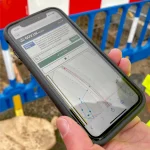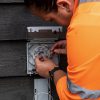Sky Broadband and BT Upgrade UK Internet Platforms to Boost Performance
Customers of Sky Broadband’s dominant fully unbundled (MPF LLU) network should now be benefitting from two subtle ADSL2+ performance improvements after the ISP confirmed that it had recently added G.INP and Nitro technology to help “boost line stability and speeds“. BT are also testing G.INP but for superfast FTTC lines.
The chances are good that most people won’t be familiar with G.INP or Nitro and indeed, in the grander scheme of things, you might struggle to notice what improvements they bring. The same could also be said about all the other little improvements that have quietly been introduced to help make both ADSL2+ (up to 20-24Mbps) and the latest VDSL2 / FTTC (up to 80Mbps) connections better over the past few years.
Advertisement
Never the less it’s sometimes interesting to point these things out, especially after the changes quietly cropped up on BE’s Help Page. Similarly BE Broadband’s recent “Talk to Sky” event confirmed that both of these have only “just rolled out” to Sky’s platform. So what do they do and why should you care? We’ll start with the better known G.INP.
Sky’s MPF Broadband Upgrades
* G.INP (Part of the ITU’s G.998.4)
This is designed to dynamically reduce a connections Bit Error Rate so as to hopefully make some lines more stable for things like video streaming and IPTV. It does this by being effective at tackling bursts of impulse noise (i.e. spikes of electromagnetic interference that are particularly problematic when they appear frequently and at much higher power levels than that of the ordinary background noise) and less interference usually equals better performance / stability. This is can also be used on supporting VDSL2 (FTTC) connections. Sky’s latest broadband routers support this.
* Nitro
We’re still awaiting confirmation from Sky but we believe this can be employed by ISPs that use Broadcom’s DSLAM network devices inside telephone exchanges. Nitro Mode works to increase the throughput on broadband links by compressing the ADSL2+ ATM header, thus requiring fewer bits to be transmitted and potentially giving you the impression of being able to get a faster connection (though the limits of your physical line remain the same).
Broadcom claims that Nitro could help some connections to achieve compressed data rates as high as 30Mbps, although this would depend upon DSLAM setup, line length, the quality of your home wiring and various other factors. For example, an ADSL2+ connection that runs at the near top speed of 20Mbps might be able to receive some information (i.e. uncompressed data) at speeds of around 24Mbps.
As above, this can also be used on supporting VDSL2 connections.
The result of additions like those above should deliver an improvement to Sky’s Dynamic Line Management (i.e. rate adaptation in ADSL/ADSL2+ connections) and general performance. We believe that Sky has actually been using G.INP for several months now (since around Easter time), although Nitro is not something we’ve heard much about before.
Similarly Sky’s network has also semi-recently been improved to tolerate lower noise margins, which use to be more of a problem and could cause some links to drop and thus reduce your line speed. This is just another of the many subtle changes that end-users rarely notice but that can help to improve your connectivity.
Naturally we also wanted to know whether BTOpenreach were planning any similar changes for their own lines, which are used by BT and various other ISPs, and after quite a bit of waiting a spokesperson finally told ISPreview.co.uk that, “we are running a limited trial of Physical Retransmission (G.INP) on a small number of FTTC/VDSL lines, to identify the benefits this capability might provide, but it’s not on ADSL2+“.
Advertisement
We hope to have some more details from Sky Broadband shortly (it’s taken awhile to find somebody with enough technical familiarity for an answer).
Mark is a professional technology writer, IT consultant and computer engineer from Dorset (England), he also founded ISPreview in 1999 and enjoys analysing the latest telecoms and broadband developments. Find me on X (Twitter), Mastodon, Facebook, BlueSky, Threads.net and Linkedin.
« UK ISP TalkTalk Slashes Plus TV and Unlimited Broadband Bundle to £10

















































Comments are closed